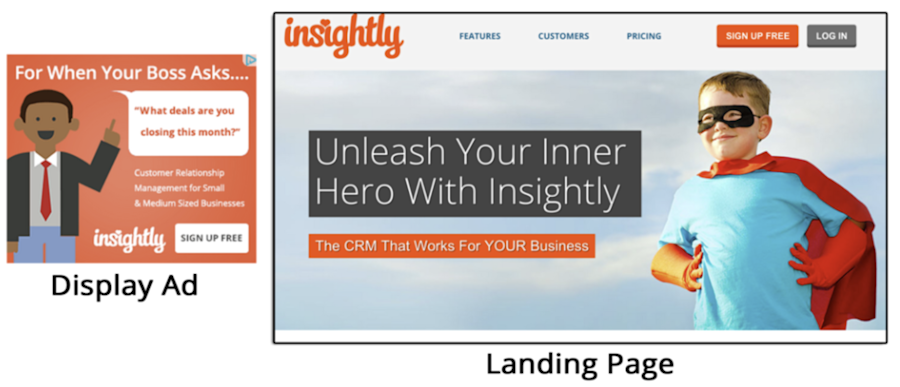
You’re an unstoppable force of basketball.
Picture it in your mind’s eye, even if you’re not into sport (or basketball in particular).
The crowd is roaring. Your skills are smoother than butter smeared on silk. As you advance up the court, you seem to dance past every obstacle.
Juke one way and move another.
Nutmeg several defenders, leaving them humiliated.
Finally you’re clear of all opposition, and only the net remains. After one last bounce, you spring effortlessly into the air, assuming perfect dunking form. You prime the ball above the target...
It slips from your fingers, lingers on the hoop, and falls to the side.
Landing gracefully, you feel the eyes of the onlookers upon you. Your cheeks redden.
All that effort, all that dedication, all that ability to set up the perfect scoring opportunity, and you fumbled it.
This is how difficult ecommerce can be.
You do what you can to get the ball, but then so many things can go wrong along the way to the net, and you can get within a heartbeat of success only to end up grasping failure instead.
In the end, it’s the results that matter.
Since you decided to click on this post, I’m going to assume two things: firstly, that you have an ecommerce store, and secondly, that you’re struggling to capitalize on new leads. (Yes, I was able to achieve this assumption through powerful psychic abilities.)
Understandably, you’re not happy with that situation.
You want to maximize your sales by making the most of every opportunity.
So what’s going wrong at the moment? Why is your online store failing to turn new leads into conversions? Here are some likely reasons:
Note: Try Leadfeeder's 14-day trial to maximize your ecommerce lead generation.
You’re being insufficiently proactive
When the ecommerce industry first began to achieve mainstream success and tempt retailers away from the traditional brick-and-mortar model, those making the leap had to accept one thing in particular before they could be successful: sitting back and waiting for shoppers to arrive is not an option for ecommerce sellers.
Get a conventional store in a convenient location and you can pick up sales without too much effort, but online all locations are comparably convenient.
To have your store be found at all, let alone chosen, you must put in serious effort to market your business. SEO, PPC campaigning, influencer promotion… There are many possible methods for doing this.
Sellers often err, however, in thinking that proactivity can end at the acquisition of leads. From there, they determine, everything can (and should) be left to the shopper.
This is ill-advised.
If a relevant consumer lands on your store, looks around, and leaves without taking any action, should you really just chalk that lead down as a loss?
Using Leadfeeder, you can identify the companies visiting your site, compare that list with the set of companies ordering from you, and pick out the notable prospects that evidently had enough interest to visit your site but weren’t convinced.
By reaching out to them, you might be able to persuade them to reconsider: at a minimum, you should be able to get some useful feedback to help you improve your store.
Your customer support isn’t good enough
Mobile ecommerce allows us to indulge our retail whims: if you wake up at 2am and decide that you really need a new cowboy hat, you can reach for your smartphone and order one before the rational part of your mind can shake off the cobwebs.
But what if you find an ambiguous product description and you’re not sure what you’re dealing with?
If there’s a support ticket system, you can log a ticket, but you probably won’t care to for a purchase you considered on a whim.
You either get support immediately or you leave. It’s often that simple: and some sellers often fail to take that into account.
Big retailers don’t, of course.
Customer service expectations have risen dramatically over the years, pushed along by a combination of in-house support, virtual assistants (sourced from across the world to cover all hours of the day), and chatbots.
Go to any big retail site and you’ll find some kind of live chat system to answer your pressing queries.

Check out the Canyon site, for instance, and you’ll see that tell-tale icon at the bottom right (see above).
Offering any one of those elements might not be enough. You can cover a lot of ground supplying automated replies with a chatbot (and it’s relatively easy to build a chatbot with a chatbot platform), but they’ll never be as natural as replies from real people.
Virtual assistants are convenient, but hard to train and manage. In-house assistants can handle high-level issues, but their schedules are limited.
Think of it as a matter of scaling.
Queries can be assessed by chatbots, then handled by them if they’re basic or passed to support assistants if they’re not.
Moderate issues can be handled by virtual assistants, and complex issues can be handled by in-house support assistants. Optimize your customer support and your leads will prove much more effective.
It’s failing to match the incoming messages
Message match is exceptionally important in the world of lead generation, yet it’s an area that consistently sees basic mistakes made.
Imagine that you saw a Google Ad saying “Big Sale on Red Leather Coats!” and thought “Ah, excellent, I’ve been meaning to buy a new red leather coat but haven’t been willing to pay full price” — it would seem that you’d found an opportunity highly relevant to your interests.
Now imagine that you clicked on that ad and arrived at a page displaying only fabric shirts, with none of them in red and no suggestion of any sale or discount pricing.
Those shirts might be spectacular and fully deserving of attention, but you’d most likely leave immediately because you clicked for a specific reason.

The above example (cribbed shamelessly from Wordstream) sees Insightly get their message match disastrously wrong. The ad uses standard business visuals, and the landing page uses… superhero visuals. Not exactly a natural fit.
The promises or suggestions that are bringing prospects to your site must be addressed immediately upon arrival.
Review all your lead sources: everything from PPC ads and influencer mentions to SERP listings and customer referrals.
If your store is being misrepresented at any point, that needs to change. Better to have no leads than false leads, because people tricked into reaching your site will sap your marketing budget and be less likely to return.
Your brand doesn’t seem to deserve support
Every online seller needs some unique selling points.
In many cases, it’s enough to have the cheapest price for a particular product, or fulfilment options that comparable sellers don’t provide, but there’s a major problem with trying to get ahead through those standout elements: consumers are increasingly determined to buy from brands they find laudable.
They care more than ever before about sustainability, and ethical operation, and good treatment of workers.
They’re willing to spend more and accommodate more inconvenience to get the products they want if they know they’re supporting good companies in the process.
If you’re consistently bringing in people interested in what you’re offering, seeing them go elsewhere, and finding it hard to understand why your offer isn’t compelling, there’s a solid chance that this is a contributing factor.
Use social media engagement to show your brand’s personality, and let people know what motivated you to start the business.
Provided you’re indeed worthy of support, learning about the people behind your operation will leave potential buyers far more likely to choose you above your competitors.
The site has basic functionality issues
Lastly, you’re obviously going to struggle to convert leads if your site has basic functionality issues.
Missing pages, confusing category titles, product filters that don’t work: even an issue that seems relatively trivial can frustrate a visitor enough to drive them away.
How can they expect a seller with such a weak website to provide good products and impressive service?
Your bias can blind you to the reality of the site you developed, so take the time to review it from the perspective of a shopper.
Test everything to ensure that it does what you expect it to do.
Access it from various mobile devices and in different conditions (using high-speed Wi-Fi and low-speed mobile data, for instance) to confirm consistent operation.

Very usefully, Uptrends has a tool (pictured above) that allows you to test a site using mobile data throttling. I suggest giving it a try.
If you find various foundational problems, then you must address them as a matter of great urgency, because they’ll be undermining the perception of your brand at the same time as they’re losing you sales.
Get your store polished to a mirror shine, then look for other areas to improve.
Don’t waste your ecommerce skills setting up qualified leads that ultimately fail to drive conversions. Hone your store to the extent that it’s an efficient sales machine, making it as easy and desirable as possible for an interested visitor to place an order.
Note: Try Leadfeeder's 14-day trial to maximize your ecommerce lead generation.
Now that you're here
Leadfeeder is a tool that shows you companies that visit your website. Leadfeeder generates new leads, offers insight on your customers and can help you increase your marketing ROI.
If you liked this blog post, you'll probably love Leadfeeder, too.
Sign up






